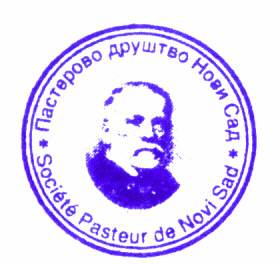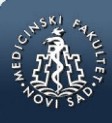md-medicaldata
Main menu:
- Naslovna/Home
- Arhiva/Archive
- Godina 2024, Broj 1
- Godina 2023, Broj 3
- Godina 2023, Broj 1-2
- Godina 2022, Broj 3
- Godina 2022, Broj 1-2
- Godina 2021, Broj 3-4
- Godina 2021, Broj 2
- Godina 2021, Broj 1
- Godina 2020, Broj 4
- Godina 2020, Broj 3
- Godina 2020, Broj 2
- Godina 2020, Broj 1
- Godina 2019, Broj 3
- Godina 2019, Broj 2
- Godina 2019, Broj 1
- Godina 2018, Broj 4
- Godina 2018, Broj 3
- Godina 2018, Broj 2
- Godina 2018, Broj 1
- Godina 2017, Broj 4
- Godina 2017, Broj 3
- Godina 2017, Broj 2
- Godina 2017, Broj 1
- Godina 2016, Broj 4
- Godina 2016, Broj 3
- Godina 2016, Broj 2
- Godina 2016, Broj 1
- Godina 2015, Broj 4
- Godina 2015, Broj 3
- Godina 2015, Broj 2
- Godina 2015, Broj 1
- Godina 2014, Broj 4
- Godina 2014, Broj 3
- Godina 2014, Broj 2
- Godina 2014, Broj 1
- Godina 2013, Broj 4
- Godina 2013, Broj 3
- Godina 2013, Broj 2
- Godina 2013, Broj 1
- Godina 2012, Broj 4
- Godina 2012, Broj 3
- Godina 2012, Broj 2
- Godina 2012, Broj 1
- Godina 2011, Broj 4
- Godina 2011, Broj 3
- Godina 2011, Broj 2
- Godina 2011, Broj 1
- Godina 2010, Broj 4
- Godina 2010, Broj 3
- Godina 2010, Broj 2
- Godina 2010, Broj 1
- Godina 2009, Broj 4
- Godina 2009, Broj 3
- Godina 2009, Broj 2
- Godina 2009, Broj 1
- Supplement
- Galerija/Gallery
- Dešavanja/Events
- Uputstva/Instructions
- Redakcija/Redaction
- Izdavač/Publisher
- Pretplata /Subscriptions
- Saradnja/Cooperation
- Vesti/News
- Kontakt/Contact
 Pasterovo društvo
Pasterovo društvo
- Disclosure of Potential Conflicts of Interest
- WorldMedical Association Declaration of Helsinki Ethical Principles for Medical Research Involving Human Subjects
- Committee on publication Ethics
CIP - Каталогизација у публикацији
Народна библиотека Србије, Београд
61
MD : Medical Data : medicinska revija = medical review / glavni i odgovorni urednik Dušan Lalošević. - Vol. 1, no. 1 (2009)- . - Zemun : Udruženje za kulturu povezivanja Most Art Jugoslavija ; Novi Sad : Pasterovo društvo, 2009- (Beograd : Scripta Internacional). - 30 cm
Dostupno i na: http://www.md-medicaldata.com. - Tri puta godišnje.
ISSN 1821-1585 = MD. Medical Data
COBISS.SR-ID 158558988
TERAPIJA ONEMOGUĆAVANJEM POKRETA ZDRAVE STRANE TELA KOD PACIJENATA NAKON MOŽDANOG UDARA
/
CONSTRAINT- INDUCED MOVEMENT THERAPY IN PATIENTS AFTER STROKE
Authors
Vesna Paušić1, Teodora Delibašić2, Ivana Ivanc3, Grigorije Jovanović4
1Udruženje za cerebralnu i dečiju paralizu južno-bačkog okruga “Sunce” Novi Sad. Bulevar Cara Lazara 35 Novi Sad
2Dom zdravlja Subotica, Šandora Petefija 7 Subotica
3Dom zdravlja Titel, Glavna 22, Titel
4„Dom zdravlja Zemun” Rade Končara 46, Zemun-Beograd.
UDK: 616.831-005.1-085
The paper was received / Rad primljen: 01.03.2023
Accepted / Rad prihvaćen: 21.04.2023.
Correspondence to:
Vesna Paušić
Udruženje za cerebralnu i dečiju paralizu južno-bačkog okruga “Sunce”
21000 Novi Sad. Bulevar Cara Lazara 35
e-mail: vesnampausic@gmail.com
Sažetak
Uvod: Moždani udar predstavlja treći uzrok smrtnosti i jedan je od vodećih uzroka invaliditeta kod odraslih osoba u svetu i kod nas. Terapijski pristupi zasnovani na teorijama motoričog učenja polaze od pretpostavke da se motoričko učenje javlja kroz interakciju višestrukih sistema same osobe i specifičnih zadataka koje ona izvršava u okolini. Jedna od terapija utemeljena na teorijama motoričkog učenja je i terapija onemogućavanja pokreta zdrave strane tela-Constraint-induced movement therapy (CIMT). Cilj: Sistematski pregled literature sa naglaskom na učinke CIMT terapije u rehabilitaciji pacijenata nakon moždanog udara. Rezultati: Klinička praksa pokazuje da primena CIMT terapije u rehabilitaciji može poboljšati funkciju ekstremiteta pacijenata nakon moždanog udara. Zaključak: Koristi koje su uočljive primenom CIMT mogu biti rezultat izlaganja intenzivnoj terapiji, ali je potrebno više istraživanja na ovu temu.
Ključne reči:
moždani udar, onemogućavanje pokreta zdrave strane tela, rehabilitacija
Abstract
Introduction: Stroke represents the third cause of death and is one of the leading causes of disability in adults in the world and in our country, as well. Therapeutic approaches based on theories of motor learning are founded the assumption that motor learning occurs through the interaction of multiple systems of the human body and specific tasks that one performs in the environment. One of the therapies based on theories of motor learning is the therapy of preventing movement of the healthy side of the body – Constraint – induced movement therapy (CIMT). Objective: Systematic review of the literature with an emphasis on the effect of CIMT in the rehabilitation of patients after stroke. Results: Clinical practice shows that the use of CIMT in rehabilitation can improve limb function in patients after stroke. Conclusion: Benefits seen with CIMT may be the result of exposure to intensive therapy, but more research is needed on this topic.
Key words:
stroke, preventing movement of the healthy side of the body, rehabilitation
References:
- Diwan S, Shah P, Bansal A. Effectiveness of distributed form of constraint induced movement therapy to improve functional outcome in chronic hemiparesis patients. IJRMS.2014;2(4):1423-30.
- Wang LD, Liu JM, Yang Y, Peng B.The prevention and treatment of stroke still face huge challenges-brief report on stroke prevention and treatment in China, 2018. Chin. Circul. J. 2019;34:105-19.
- Zhang XZ, Lyu M, Luo XF, Yu X, Wang L, et al. Recommendations of clinical practice guidelines of stroke rehabilitation. Chin. J. Rehabil. Theory Pract. 2020;26: 170-80.
- Bonnier B, Eliasson A, Krumlinde-Sundholm L.Effects of constraintinduced movement therapy in adolescents with hemiplegic cerebral palsy: A day camp model. Scandinavian Journal of Occupational Therapy.2006;13(1):13-22.
- Charles J, Wolf S, Schneider J, Gordon A.Efficacy of a child-friendly form of constraint-induced movement therapy in hemiplegic cerebral palsy: a randomized control trial. DMCN.2006;48:635-42.
- Dettmers C, Teske U, Hamzei F, Uswatte G, Taub E, Weiller C. Distributed Form of Constraint-Induced Movement Therapy Improves Functional Outcome and Quality of Life After Stroke. Archives of Physical Medicine and Rehabilitation.2005;86(2):204-09.
- Taub E, Uswatte GR. Constraint-Induced Movement Therapy: A new Family of Techniques with Broad Application to Physical Rehabilitation - A Clinical Review, Journal of Rehabilitation Research & Development. 1999;36(3):237-51.
- Karman N, Maryles J, Baker RW, Simpser E, Berger-Gross P. (2003): Constraint-Induced Movement Therapy for Hemiplegic Children with Acquired Brain Injuries, The Journal of Head Trauma Rehabilitation.2003;18(3):258-66.
- Cimolin V, Beretta E, Piccinini L, Turconi AC, Locatelli F, Galli M, Strazzer S. Constraint-Induced Movement Therapy for Children With Hemiplegia After Traumatic Brain Injury: A Quantitative Study, The Journal of Head Trauma Rehabilitation.2012; 27(3):177-87.
- Cope S, Liu X, Verber M, Cayo C, Rao S, Tassone C.Upper limb function and brain reorganization after constraint-induced movement therapy in children with hemiplegia. Developmental Neurorehabilitation.2010;13(1):19-30.
- Porter K, Lord S. Constraint-induced movement therapy for people following stroke in an outpatient setting, New Zeland: Journal of Physiotherapy.2004;32(3):111-19.
- Gordon A, Charles J, Wolf S.Efficacy of Constraint-Induced Movement Therapy on Involved Upper-Extremity Use in Children With Hemiplegic Cerebral Palsy Is Not Age-Dependent. Pediatrics.2006;117(3):363-73.
- Constraint-induced movement therapy. American Heart Association and American StrokeAssociation:http://www.strokeassociation.org/STROKEORG/LifeAfterStroke/RegainingIndependence/PhysicalChallenges/ConstraintInduced-Movement-Therapy_UCM_309798_Article.jsp#.Vmv-IL_r9_k. Posećeno 02/05/2023.
- Huang H, Fetters L, Hale J, McBride A. Bound for Success: A Systematic Review of Constraint-Induced Movement Therapy in Children with Cerebral Palsy Supports Improved Arm and Hand Use. Journal of the American Physical Therapy Association.2009;89(11):1126-41.
- Wang D, Xiang J, Xe Y, Juan M, Dong L, Ye Z, Mao W. The Mechanism and Clinical Application of Constraint-Induced Movement Therapy in Stroke Rehabilitation. Front. Behav. Neurosci. 2022;1-7.
- Hu J, Liu PL, Hua Y, Gao BY, Wang YY, Bai YL, et al. Constraint-induced movement therapy enhances AMPA receptor-dependent synaptic plasticity in the ipsilateral hemisphere following ischemic stroke. Neural Regener. Res.2021;16:319–24.
- Page SJ, Levine P, Leonard AC. Modified constraint-induced therapy in acute stroke: a randomized controlled pilot study. Neurorehabil. Neural Repair.2005;19: 27–32.
- Singh, P., and Pradhan, B.Study to assess the effectiveness of modified constraint-induced movement therapy in stroke subjects: a randomized controlled trial. Ann. Indian Acad. Neurol.2013;16:180–4.
- Smania N, Gandolfi M, Paolucci S, Iosa M, Ianes P, Recchia S, et al. Reduced-intensity modified constraint-induced movement therapy versus conventional therapy for upper extremity rehabilitation after stroke: a multicenter trial. Neurorehabil. Neural Repair.2012;26:1035–45.
- Wolf SL, Winstein CJ, Miller JP, Thompson PA, TaubE, Uswatte G, et al. Retention of upper limb function in stroke survivors who have received constraint-induced movement therapy: the EXCITE randomised trial. Lancet Neurol. 2008;7: 33–40.
- Treger I, Aidinof L, Lehrer H, Kalichman L. Modified constraintinduced movement therapy improved upper limb function in subacute poststroke patients: a small-scale clinical trial. Top. Stroke Rehabil.2012;19:287–93.
- Abdullahi A. Effects of number of repetitions and number of hours of shaping practice during constraint-induced movement therapy: a randomized controlled trial. Neurol. Res. Int.2018; 2018:5496408.
- Emgs ES, Ribeiro TS, da Silva TCC, Costa MFP, Cavalcanti F, Lindquist ARR. Effects of constraint-induced movement therapy for lower limbs on measurements of functional mobility and postural balance in subjects with stroke: a randomized controlled trial. Top. Stroke Rehabil. 2017;24: 555–61.
- Kallio K, Nilsson-Wikmar L,Thorsén AM. Modified constraintinduced therapy for the lower extremity in elderly persons with chronic stroke: single-subject experimental design study. Top. Stroke Rehabil.2014;21:111–9.
- Baldwin CR, Harry AJ, Power LJ, Pope KL, Harding KE. Modified constraint-induced movement therapy is a feasible and potentially useful addition to the community rehabilitation tool kit after stroke: a pilot randomised control trial. Austral. Occupat. Therapy J.2018;65:503–11.
- Brunner IC, Skouen JS, and Strand LI. Is modified constraint-induced movement therapy more effective than bimanual training in improving arm motor function in the subacute phase post stroke? A randomized controlled trial. Clin. Rehabil.2012;26:1078–86.
- Thrane G, Askim T, Stock R, Indredavik B, Gjone R, Erichsen A, et al. Efficacy of constraint-induced movement therapy in early stroke rehabilitation: a randomized controlled multisite trial. Neurorehabil. Neural Repair.2015;29:517– 25.
PDF: 09-Paušić V. et al MD-Medical Data 2023;15(1-2) 043-046.pdf
 Medicinski fakultet
Medicinski fakultet